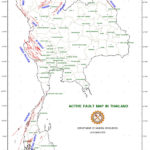Natural calamities arise from a combination of intricate and diverse factors, resulting in many consequences. They are frequently impacted by numerous factors, including as geographical location, climate, and human activities. Deforestation can exacerbate flooding by diminishing the soil’s capacity to absorb water. Climate change is exacerbating the intensity and recurrence of weather-related catastrophes.
The impacts of these calamities are similarly varied. Natural disasters can lead to fatalities, property damage, population displacement, infrastructure devastation, and economic decline. Additionally, they have the potential to induce enduring ecological harm, such as the degradation of soil and the depletion of habitats, which may take several decades to restore.
Analysis of a Particular The circumstances: The most devastating natural disasters worldwide
Throughout history, the global community has observed a series of profoundly catastrophic natural calamities. The 2004 Indian Ocean earthquake and tsunami was a catastrophic event that resulted in a significant loss of human life. It caused the death of more than 230,000 individuals in 14 different nations, making it one of the deadliest disasters in recorded history. The occurrence also resulted in extensive devastation, leading to the displacement of millions of individuals and the severe destruction of numerous coastal communities.
Likewise, the earthquake that occurred in Haiti in 2010 resulted in the death of over 230,000 individuals and left 1.5 million people without a house. Additionally, it resulted in significant harm to the country’s infrastructure, severely impacting its economy and posing a formidable challenge for recovery.


![Day_70 :災害対応と文化 [Japanese]](https://disasterresearchnotes.site/wp-content/plugins/wordpress-23-related-posts-plugin/static/thumbs/30.jpg)


